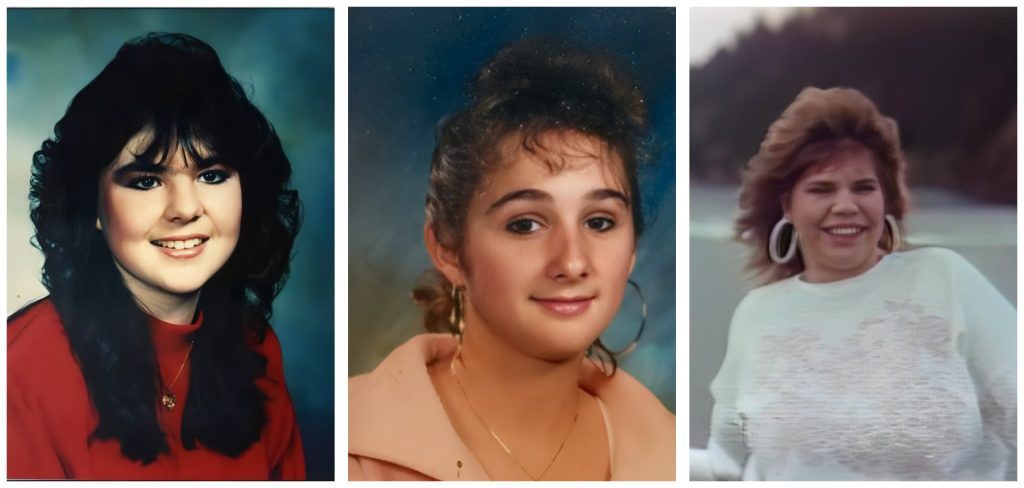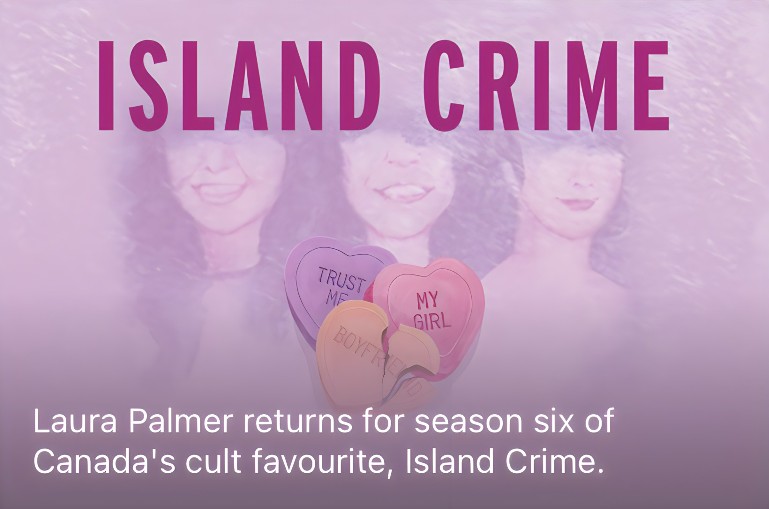Linda LeFort will never forget reading the headline announcing her stepdaughter Melissa Nicholson’s death.
“Body Identified as Teen Hooker Victim No 3. “

“I just absolutely collapsed. I could not believe that, on top of everything else, what they were focusing on was that she was a prostitute. I don’t know how any journalist would consider that an appropriate thing to do when announcing the death of a young woman. That was just so appalling to me,” said LeFort.
The 17-year-old’s body was discovered off the side of the road in the Shawnigan Lake area on June 11, 1991.
Before her murder, Melissa Nicholson was being sex trafficked on the downtown Victoria stroll.
In the preceding 12 months, two other teenage girls had been killed.

Cheri Lynn Smith had just turned 18 and was six months pregnant when her body was discovered in Saanich on Sept. 9, 1990. Seventeen-year-old Kimberly Gallup was murdered on Nov. 21, 1990.
Their stories are the focus of the latest season of the Island Crime true-crime podcast, Sweethearts.

The three teens were murdered before the public conversation about sex trafficking had begun.
Judith Lavoie was a reporter at the Times Colonist for about 25 years. She didn’t write the headlines, but she is uncomfortable seeing her stories under ‘hooker teen’ captions.
“My skin absolutely crawled when I saw the headlines. There’s no way that anybody would write headlines like that now. It’s so disrespectful,” she said.
Jody Paterson is also a former reporter and editor for the Times Colonist. She too recalls the demeaning dialogue of the time.
“They were lucky to even get called prostitutes. You did see headlines like ‘child hooker.’ Hooker was a very common term to use in stories and in headlines, especially because it was nice and short,” Paterson said.
The three teenage girls, last seen on Victoria’s downtown stroll, had been murdered. But the safety of these young women was not the focus of the news agenda of the day, Paterson explains.
“There weren’t very many people talking about safety and the lives of the women rather than viewing them as a nuisance that needed to be swept away.”
She says at the time, the young women on the stroll were viewed as a source of annoyance.
“Where Victoria wanted to be on tourists, was to attract them to a safe and nice town to feel completely comfortable in. And having a visible sex trade in their downtown core, did not fit in their minds with the kind of image that Victoria wanted to put out for tourists,” Paterson said.
Paterson would go on to work as the executive director of Peers Victoria, a grassroots agency supporting current and former sex workers.
“The common phrase that drove me crazy then was ‘high-risk lifestyle.’ People with a ‘high-risk lifestyle’ were sort of seen as to blame if anything were to happen to them because there was a stigma, the judgment, the stereotyping — it was definitely almost universal,” she recalled.
Dr. Raven Bowen is the CEO of National Ugly Mugs, a U.K.-based charity that supports sex workers in reporting violence. In the 90s, she was providing outreach with sex trade workers in Vancouver.
“The language and terminology changed depending on who was saying it and how dehumanizing they were being. But we would hear things like ‘child prostitute’ and things like that,” Bowen said.
She draws a line between how the girls were portrayed in the media, and their murders.
“That’s part of that discourse of disposal. When the community doesn’t want them and the police don’t want them, and, you know, everybody treats them as if they’re garbage and disposable, then there are those who would go out and do what they feel is their duty to rid the community of sex workers,” Bowen explained.
“And we see that in some of the rhetoric of folks who murder sex workers. There’s a correlation between how we treat sex workers and how they end up being treated.”
Awareness of sex trafficking has increased in the three decades since Cheri Lynn Smith, Kimberly Gallup, and Melissa Nicholson were killed. Today, the teenagers would be viewed as sexually exploited youth.
“Outside of just being straight-up cruel, there’s no reason to treat people in the ways that we do. The hypocrisy of all of that really strikes me. They (the victims) are us and we have to start treating them like they are. “
Journalist Judith Lavoie regrets not taking a greater stand in her newsroom back at the time of the murders.
“I wish I had jumped up and down and screamed more. I don’t know if it would have made any difference, but I think we should have, because we all knew that this was not the right way to be talking about people.”
If you or someone you know may be a human trafficking victim, you can call the Canadian Human Trafficking Hotline at 1-833-900-1010.
‘Sweethearts’ is a series for the Frequency Podcast Network. You can listen to this series and other Island Crime episodes on all podcast platforms.
Rogers is the parent company of this station and the Frequency Podcast Network.